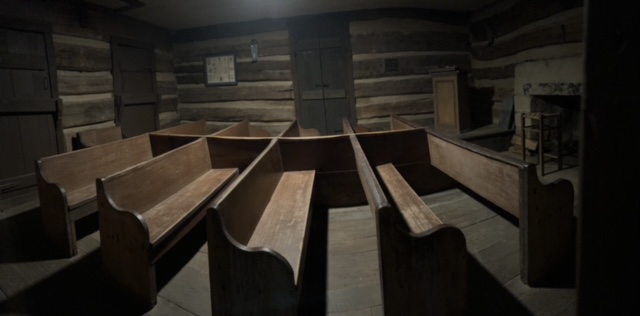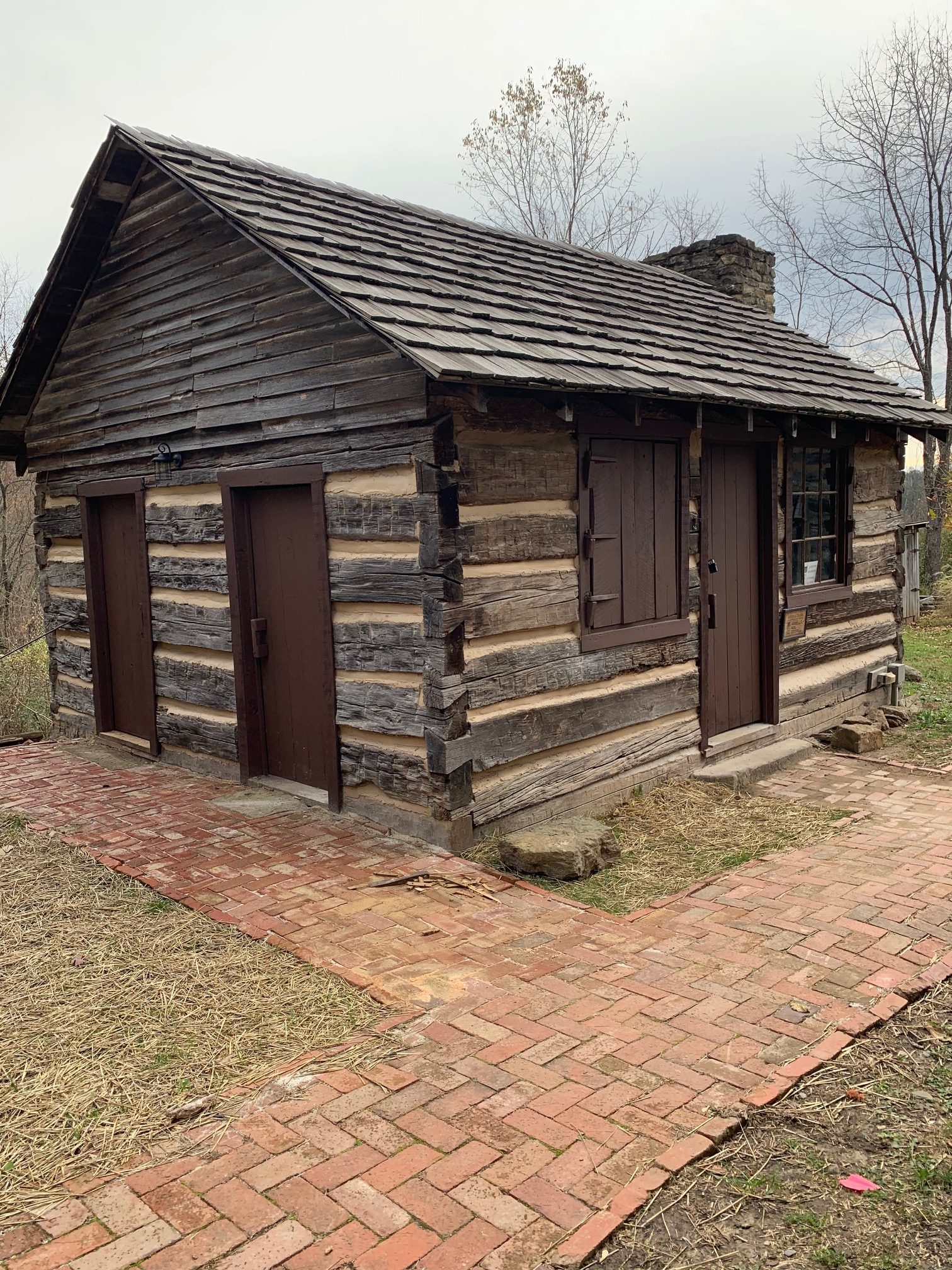MEETING HOUSE
Name of Structure: The Meeting House
Original Location: Big Flint – Doddridge County
Donated by: The Ford Family
Labor Donated By: The Seventh Day Baptist Church (2007), The Salem Correctional Facility’s Good Neighbors Crew (2019)
Original Sponsor: The Salem Chapter of the DAR (Colonel William Lowther)
Additional Sponsor: Salem Seventh Day Baptist Church
The piece of property from which the cabin was removed was deeded to Joel Davis by John B. Floyd, the governor of Virginia in 1850. To many people in this area, the property is still known as the Joel Davis Estate. The original cabin, from which this structure was derived, was described by its former residents as very peaceful and cozy. Fort New Salem elected to reconstruct this cabin as the Meeting House. During reconstruction of the Meeting House, the dimensions of the original logs were changed to accommodate its edification and the interior wood was used from the Greenbrier Seventh Day Baptist Church. In 2007, a significant amount of work was done on this building, and it was also renovated in 2019.
A meeting house was not only used as a place of worship, but also as town hall and school when teachers were available. Itinerant teachers would often travel through communities at different times and were paid to stay for a while to teach the young. Schooling was not formal since farms were the most important part of family life, keeping the children at home for their labor. Winter was generally the best time for a child “to get schooling,” as there was not as much work to be done during the cold months.
This building is representative of the small log churches established by congregations of various denominations throughout Western Virginia during the 18th and early 19th centuries. On Sabbath, which is observed on Saturdays by the Seventh Day Baptists who settled New Salem, the congregation would enter through the two doors in the rear of the meeting house. The doors were separate for a reason. The men entered and sat on the right side of the pews, while the women and children entered and sat in the pews to the left. Women had very little interaction with the affairs of the church during this time period.
The church services took up the majority of the day with socializing afterwards. Very often this was the only opportunity for neighbors to visit with each other, and sometimes a church supper followed the services. On a more dour note, church trials or “churchings” were held. Church records show that members of the New Salem Church were put on trial or “churched” for such activities as dancing and hoeing corn on the Sabbath. These crimes were punished by excommunication or a monetary fine.
The content of this page was developed by information provided to and written by David Huffman, 2023 Intern Fairmont State University.




